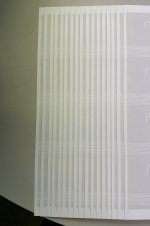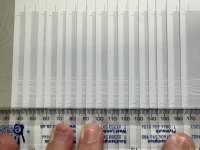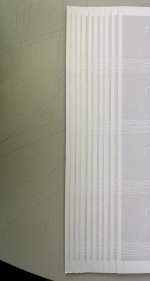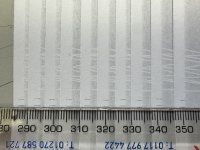I am looking into buying a versant 280, whats your feedback? good machine?
So, after using the printer now for 1 year, I will give you my honest feedback on the machine. Now there are some good and bad points with the machine, as suspected with anything. Prior to us having the Versant 280, we did have a Xerox C60, so it was quite a big upgrade for us as you can imagine. Our setup of the Versant 280 consists of 2 high capacity trays, decurler module and production ready booklet maker finisher. We also have an external Fiery along with Fiery Impose software, which again is a massive benefit, especially for imposition and gang-up etc. Previously this was something we did manually in Adobe InDesign. If you are planning to get a Versant 280, I would highly recommend getting just those add-ons, as trays 1-3 are not the most reliable really for registration (something I will talk about later) trays 6 and 7 are more reliable for this, plus they can hold more paper and the paper has a more flatter path to go through. Also if you are looking at the trimmer knife module and square-fold module, from speaking to other customers and Xerox engineers, you would be better off buying a offline standalone booklet trimmer, as adding these onto the machine it does slow it down and it is prone to have jams and not the most reliable. Plus the added costs.
One of the main benefits was being able to duplex up to 350gsm, of which it does do a decent job at. The decurler module has been another benefit, as when printing thick card stock or NCR (carbon paper) the sheets come out lovely and flat, compared to our old C60. Having the paper profiles you can easily adjust the fuser temperature for each paper type which also helps for paper curl. For colour consistency I have noticed especially on solid colours when you gang-up a job, that sometimes you can get variation in colours where one side of the sheet seems to be darker than the other. You do still get banding, however it is more of an improvement, again coming from using the C60. Also if you are printing a full colour coverage, because of the limitation of the transfer belt length, you can get a solid line going across from where toner has to replenish back onto the transfer belt (basically where it starts and ends).
Another main disappointment is the "scratch lines" as I call them. These are more notable when printing on thicker coated card stock (uncoated you can sometimes get away with) and having a solid colour, especially if it's a duplex job. These scratch lines are caused from the plastic baffles inside the main engine itself. So you will get thin lines all over the sheet, as though someone has brushed a porcupine or hedgehog over it. From speaking to other people and Xerox engineers, apparently even the next machines up like the Iridesse still have these issues. (Maybe for Xerox to go back to the drawing board to look at?).
Coming back to registration, now its not the most 100% reliable, you do seem to get a movement shift now and again (I do believe the machine has a tolerance of +/- 2mm-3mm. Which can be annoying especially if you are doing numbered NCR (carbon paper) when printing 2 or 3 different coloured sheets at the time, as you want these to line up. It is handy having the paper library to have these paper stocks setup. The idea behind this is so each paper stock has its own alignment profile saved so it remembers for next time, but I have found that whenever you are changing stocks in the trays, always perform a alignment profile as it does seem to shift when printing a profile test sheet. If you do print a long run job, again registration can all of a sudden move, so you have to keep an eye out on the output tray, as from previous experience leaving it to run, you can have a nightmare at the end going through them. I have also done a few jobs making use of the long sheet banner printing, which has been quite effective, but again you do get quite a bit of movement registration.
Lastly, one of the main things you will experience with this machine, is a well known issue (and Xerox are aware of it), is the famous 2nd BTR, where basically the roller is worn and starts to get channels grooved onto the roller after time, especially if you run thicker card stock a-lot and you will start to get black marking lines over the sheet. Since having the machine, I have had it changed 4 times so far, the last one did last long at all. But again it just depends on what paper stock you will be printing on, if you don't print on much thick card, then it can last for a long while. Basically you can call out an engineer or do it yourself, like I have done, where you have to unscrew and take the whole part out and replace. It sure is headache when you get it, sometimes it is handy if you can get hold of a spare on standby, but currently they are like gold dust and even the engineers don't have them in stock with them. It must be a costly resource for Xerox and I'm surprised they haven't found a solution yet, well not in the UK they haven't. (Perhaps another thing to add to Xerox's drawing board).
Personally I think Xerox could actually do with sitting down and talking to their digital print customers and asking them what we need and how to improve the machine so we don't have these issues in 2024 and then we might actually get a reliable and efficient printer for the digital print market. Regarding Xerox engineer service, I have had no problems with getting them out ti service the machine, sometimes they can even turn up the same day. I also have my machine setup to re-order toner consumables automatically which always come in good time. So I hope my honest feedback has helped for you.













